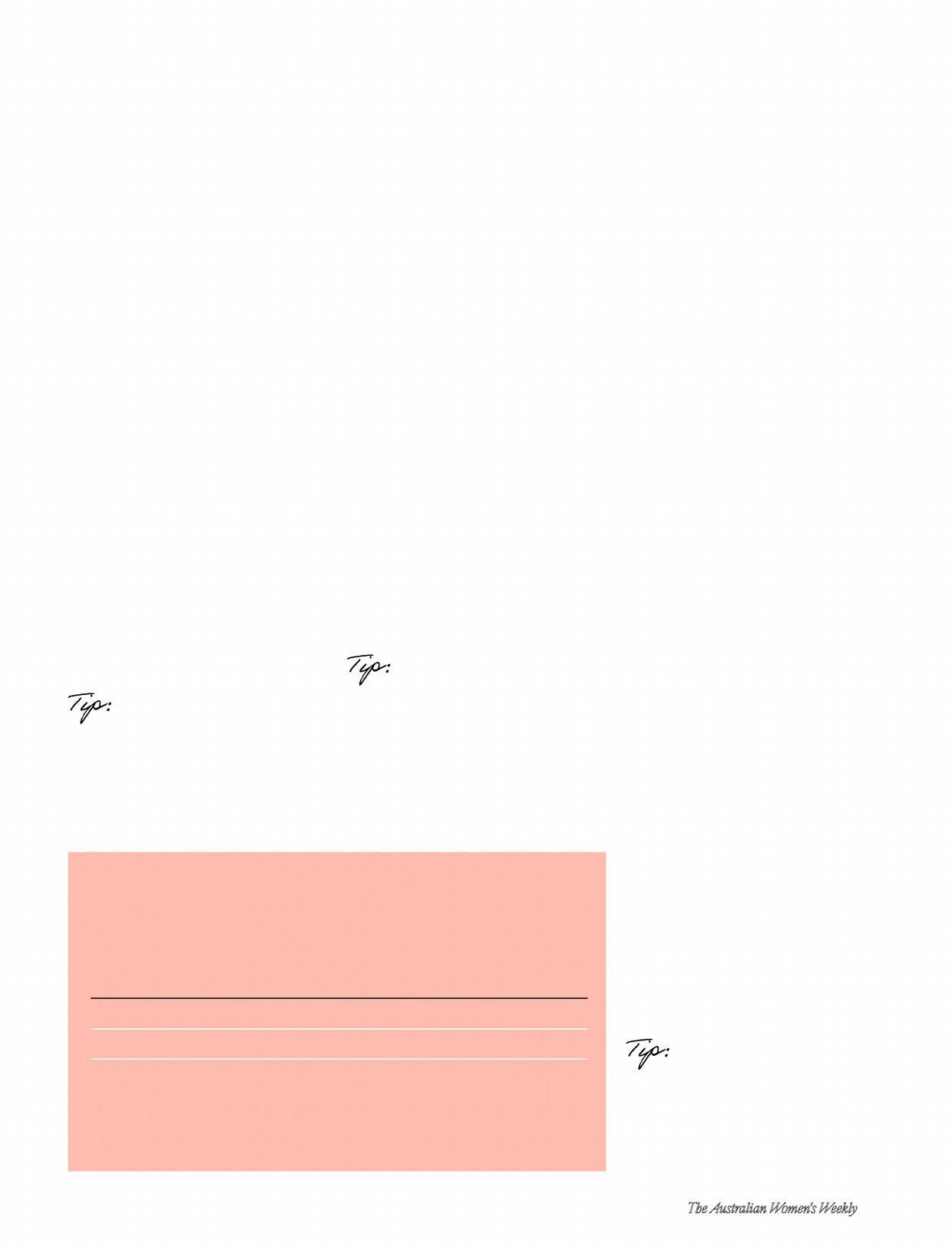
3 minute read
Money
You want to save on food wastage …
SuperCook
Advertisement
You enter information on the ingredients you have in the fridge and pantry and the app will come up with recipes you can make using what you have at home. You might also like: Tasty and Yummly.
You want to save on fuel ...
Fuel Map Australia
It’s a crowd-sourced database of petrol stations and fuel prices from across Australia – so the information comes from other motorists. You can then use it to find the best price for petrol near you. You might also like: GasBuddy, FuelWatch (WA), MotorMouth, MyFuel NT, NSW FuelCheck and PetrolSpy.
You want to track your spending ...
Canstar App
The Canstar app lets you see your financial accounts – transaction and savings accounts, credit cards and loans – on a single dashboard. This means you don’t have to sign in to apps or websites to get the info. You might also like: Humaniti, MoneyBrilliant and Pocketbook.
Delete one app that’s costing you money.
While there’s no shortage of apps that deliver meals, convenience comes at a price. Between delivery, service and priority fees, a $10 burger can easily turn into a $20 buyer’s regret.
3. Start investing (if you haven’t already)
There’s a big difference between saving and investing. While it’s important to have a cash account, don’t expect money in the bank to make you rich. What’s exciting about investing is that even small amounts can make a big difference to your wealth over time. And it’s all thanks to the magic of compound returns.
Compound interest is essentially where you earn interest on top of any interest already earned on your savings. It can be a powerful force and with the benefit of compounding under your belt, your investments can grow exponentially over time.
Just take a look at the table below which shows how regular investments can grow over time. Assuming you started investing just $20 a week 10 years ago your investment balance would now be about $16,857.
This is based on an average annual net total return of the S&P/ASX 200 over the 10 years to August 3 which was 10.04%pa.
Save little, save often but watch the fees.
No matter how you choose to invest, whether it’s through small change or a regular sizable investment, the thing to watch out for is fees. Don’t just look at the dollar value, but what they work out to as a percentage of the money you have invested.
Making regular investments
Investing even small amounts, like $20 a week, over time can make a big difference to your wealth, thanks to the power of compound returns.
Started investing Weekly investment Total invested Total fees Total earnings Total balance
10 years ago $20 $50
$100 $10,400
$26,000
$52,000 $341
$445
$656 $6798
$17,284
$34,739 $16,857
$42,839
$86,083
SOURCE: CANSTAR. PREPARED ON 4/08/2021. BASED ON THE WEEKLY NET TOTAL RETURN OF THE S&P/ASX 200 INDEX OVER THE PAST 10 YEARS (EFFECTIVE TO 3 AUGUST 2021). CALCULATIONS INCLUDE THE AVERAGE ACCOUNT KEEPING FEE AND BROKERAGE OF A SELECTION OF MICRO-INVESTING PLATFORMS, WITH THE ACCOUNT KEEPING FEE CHARGED AT THE END OF EACH YEAR. OTHER TAXES, TRANSACTION COSTS OR ACCOUNT FEES MAY APPLY. PAST PERFORMANCE IS NOT A RELIABLE INDICATOR OF FUTURE PERFORMANCE.
Nomatterhow youchooseto invest,thething towatchoutfor isfees.Don’t justlookatthe dollar value.
4. Give your super some love
If you were born in 1970, your super balance should be close to $271,000 if you’re hoping to be on track for a ‘comfortable’ retirement, as defined by ASFA. If you were born in 1980, your super balance should be close to $154,000. How much super do you have? Some quick ways to play catch up include knowing the fund fees you’re paying. So, how much is a fair amount to pay?
Well, super fees can vary depending on a number of factors including the asset class you’re invested in and the fund manager you’ve chosen.
To work out your fees expressed as a percentage, take the total fee amount, divide it by your balance and multiply it by 100. So, let’s say you paid $1500 in fees and your balance is $120,000 your fees come to 1.25%. That is higher than the average amount for that balance. Ideally, if you’re in a balanced super fund, you’d want that number to be around the 1% mark or lower.
It’s also important to note that a higher fee does not necessarily mean a better return or vice versa. Instead, focus on the net benefit: that is the investment return minus fees and taxes.
Check if you’re on track for a comfy retirement.
You can use the calculator at superguru.com.au/calculators/ super-detective to work out whether you’re on track or have some catching up to do. AWW










